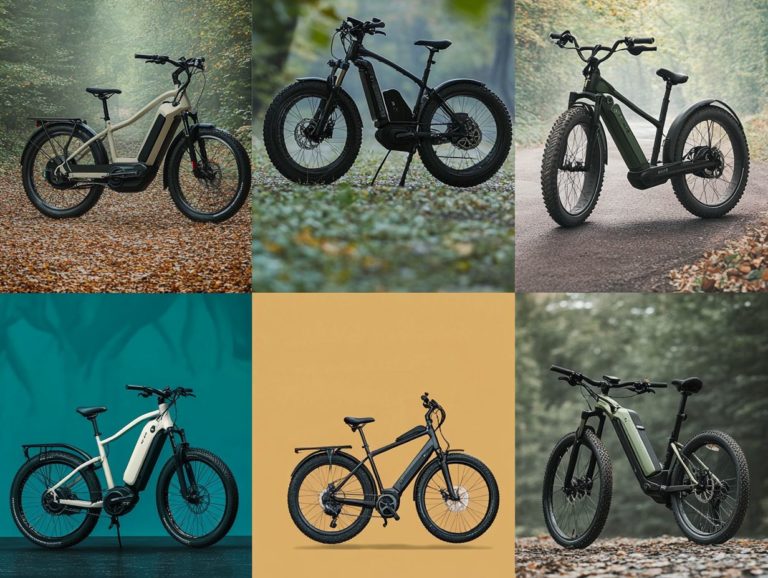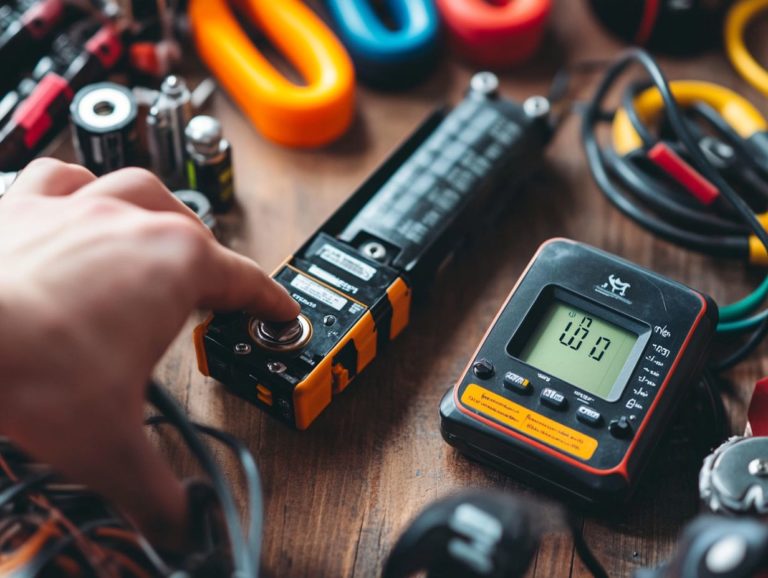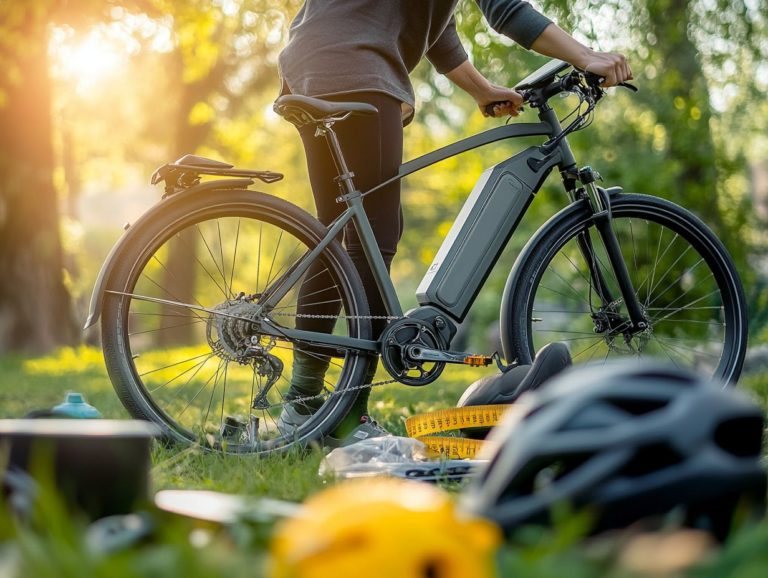What to Know About Electric Bicycle Components
Electric bicycles are revolutionizing the way you commute and explore, seamlessly blending efficiency with eco-friendliness.
To make informed choices, you need to understand the key components of these remarkable machines. This article will guide you through the elements that influence an e-bike’s performance, starting with battery types and considerations, then delving into motor performance, controller systems, and the importance of quality brakes and suspension.
Let s dive in and discover how each component can supercharge your riding experience!
Contents
- Key Takeaways:
- Battery Types and Considerations
- Motor Types and Performance
- Controller Systems and Features
- Brakes and Suspension Systems
- Other Essential Components
- Frequently Asked Questions
- 1. What are the main components of an electric bicycle?
- 2. How does the battery affect an electric bicycle’s performance?
- 3. What is the difference between a hub motor and a mid-drive motor?
- 4. Is it possible to upgrade electric bicycle components?
- 5. How does the controller affect an electric bicycle’s performance?
- 6. What should I consider when choosing an electric bicycle based on its components?
Key Takeaways:
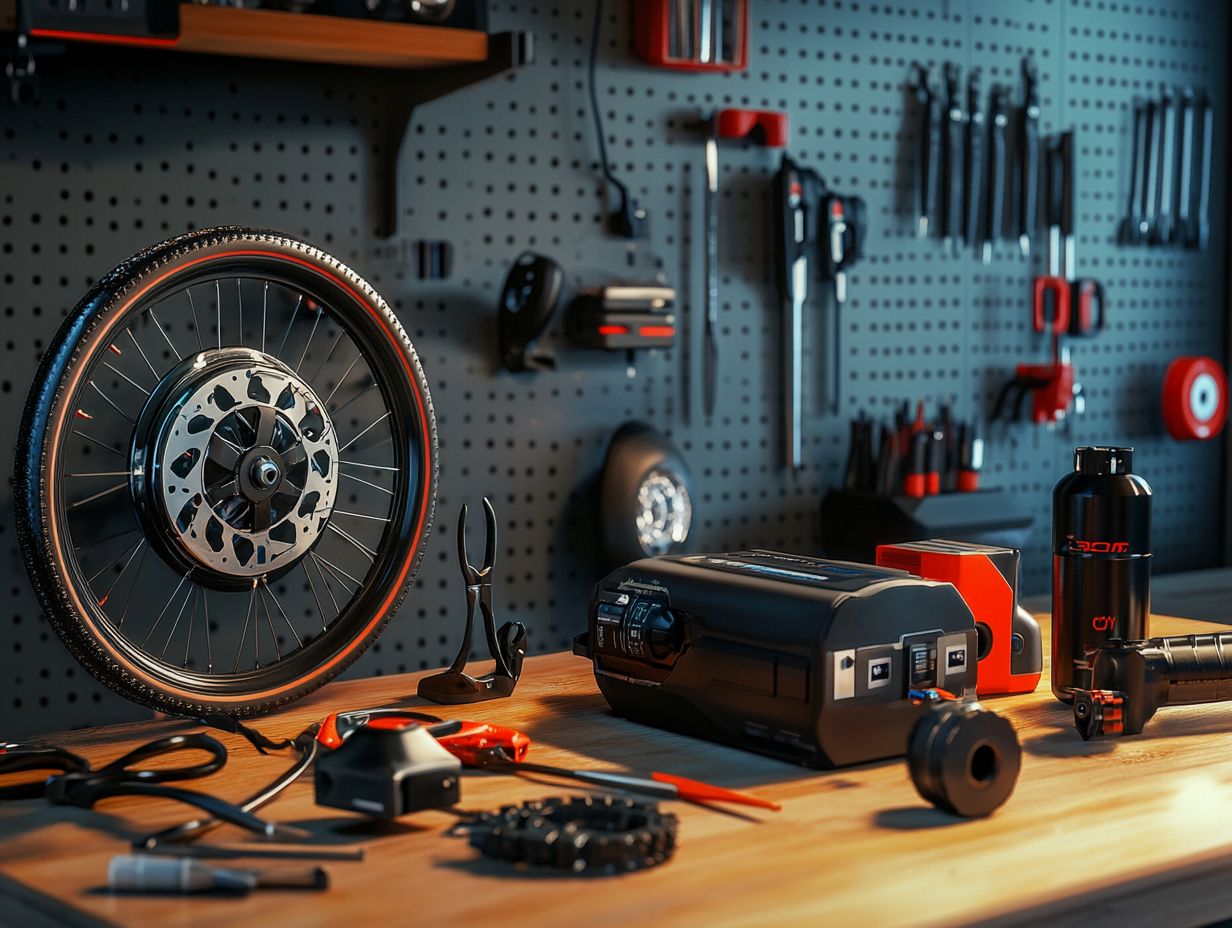
- Choosing the right battery is crucial when considering an electric bicycle, as it directly impacts range and performance.
- The type and power of the motor greatly affect how the bike rides, with considerations of efficiency and speed.
- Investing in quality brakes and suspension systems is essential for safety and a comfortable ride on an electric bicycle.
Overview of Key Parts and Functions
The electric bike, commonly known as an e-bike, is a marvel of modern engineering that integrates various components to elevate your cycling experience, making it both efficient and enjoyable.
At the core of this innovative machine lies the lithium-ion battery. These batteries are lightweight and can hold a lot of power. They store energy and play a vital role in ensuring reliability and longevity during your rides. To better understand the different options available, you can explore the electric bicycle types. The capacity of your battery affects how far you can ride on a single charge, allowing you to embark on longer journeys without the nagging worry of running out of power.
Working in harmony with the battery is the motor, available in various configurations to provide essential support whether you’re tackling inclines or cruising at higher speeds. For a deeper dive into how these components work together, check out understanding the mechanics of electric bikes. Brake levers are thoughtfully designed to integrate smoothly with the motor, ensuring that you maintain control safely in all conditions.
LED lights boost your visibility and inform others on the road of your intentions, significantly enhancing your safety. The presence of speed sensors further refines your riding experience, as they allow the e-bike to dynamically adjust power output, perfectly syncing with your pedaling effort and preferences. To ensure you choose the best option for your needs, it’s important to learn how to identify quality electric bicycle types.
Battery Types and Considerations
When selecting the ideal e-bike battery, it s crucial to evaluate the different types available, with lithium-ion batteries standing out for their impressive energy storage capacity and extended life cycles. These attributes make them a top choice for enhancing your riding experience.
Comparing Different Battery Options
Comparing different battery options for electric bikes requires a careful examination of specifications, longevity, and overall performance, particularly when weighing lithium-ion against other varieties.
Lithium-ion batteries often emerge as the preferred choice due to their remarkable energy storage capacity, which translates into impressive watt-hour capacities frequently exceeding 500Wh. In contrast, traditional lead-acid batteries typically lag behind in performance and tend to be heavier, making them less than ideal for extended rides. If you’re considering enhancements for your ride, check out this guide on how to upgrade parts on your electric bicycle.
In terms of charging, lithium-ion batteries shine, often reaching full capacity in under five hours, while lead-acid options can take a full day or more. To learn more about the intricacies of these systems, check out the essential guide to electric bicycle components.
Though lighter and more compact, lithium-ion batteries do come with a higher price tag and necessitate specific management systems to ensure safety and longevity. On the flip side, nickel-metal hydride (NiMH) batteries offer a reasonable compromise regarding weight and cost but fall short on charging speed and energy efficiency.
By carefully considering these metrics, you can make informed choices that perfectly align with your biking needs.
Motor Types and Performance
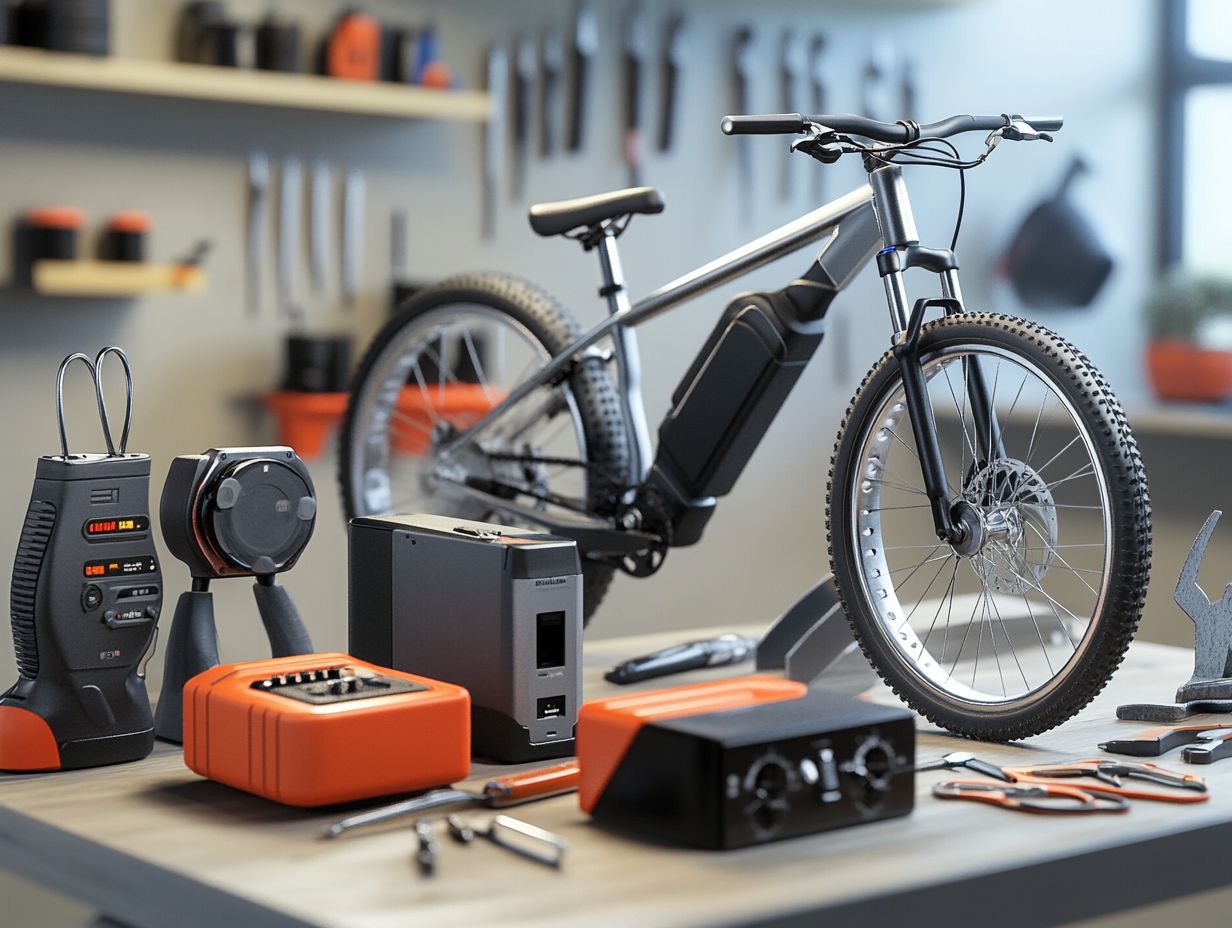
Grasping the different types of e-bike motors is essential for choosing the perfect electric bike, as they significantly influence performance, efficiency, and your overall riding experience.
Two prominent options to consider are hub motors and mid-drive motors.
Understanding Motor Power and Efficiency
Motor power and efficiency are essential elements that shape your ride quality on an e-bike. They directly impact how effectively the motor assists you during pedal assist modes.
The wattage of the motor is crucial for overall performance, especially in varying conditions. If you re a heavier rider, you may need more power to maintain your speed on inclines or rugged terrain.
Opting for a higher wattage ensures a smooth and enjoyable ride. The type of trail you encounter whether it s hilly, flat, or uneven adds complexity, as each terrain presents unique challenges.
By understanding the interplay between your weight, the terrain, and the motor’s capabilities, you can select an e-bike that aligns with your individual needs. Additionally, understanding the anatomy of electric bicycles ultimately enhances both performance and energy efficiency.
Controller Systems and Features
The controller system of your e-bike is essential for managing power distribution to the motor. It influences everything from throttle control to the delivery of real-time data on the monitoring display.
Its role is pivotal in ensuring a seamless riding experience, allowing you to optimize performance with precision.
How Controllers Impact Performance
The performance of your e-bike hinges on its controller, which regulates the power supplied to the motor based on your throttle input and riding preferences.
Different types of controllers, such as sine wave and square wave, significantly impact acceleration and top speed. Each provides unique levels of turning power and responsiveness.
A sine wave controller offers smoother power delivery, enhancing your comfort and allowing for gradual acceleration perfect for urban navigation.
In contrast, a square wave controller delivers a more exhilarating ride, ideal for those seeking thrilling speeds.
With user-adjustable settings, you can fine-tune elements like acceleration curves and maximum speed limitations to craft a personalized experience that matches your riding style. Additionally, it’s important to know how to clean and maintain electric bicycle components to ensure optimal performance.
Brakes and Suspension Systems
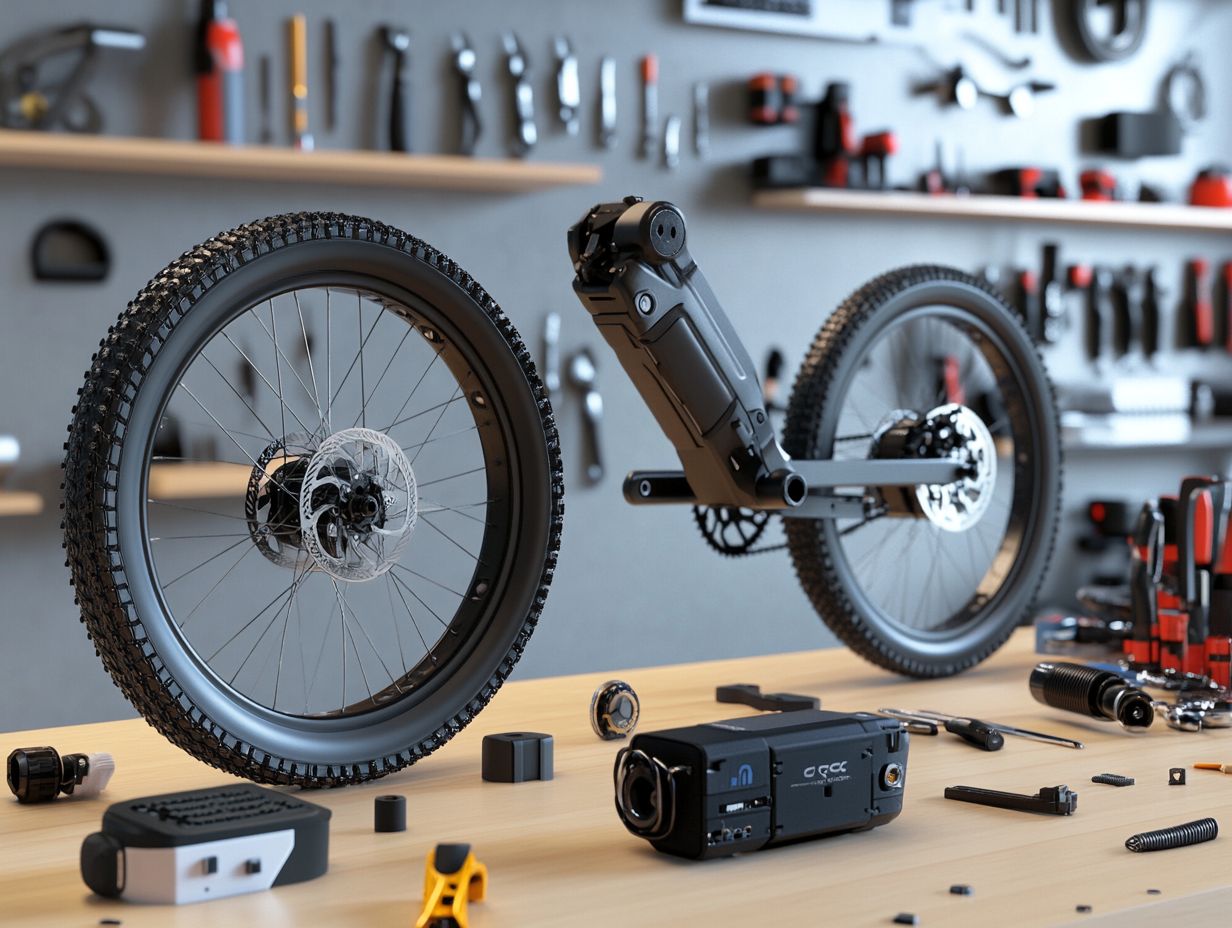
Quality brakes and suspension systems are vital for your safety and comfort while riding e-bikes. Consider options like hydraulic brakes, which offer superior stopping power and responsiveness.
Importance of Quality Brakes and Suspension
High-quality e-bike brakes and suspension systems are crucial for safety, providing improved control and handling across various conditions.
These systems play a significant role in how effectively you can respond during emergencies, especially when navigating challenging terrains or adverse weather.
Hydraulic brakes deliver more reliable stopping power compared to their mechanical counterparts, essential when traversing mountainous areas or riding in the rain.
Maintaining these braking systems is vital; worn-out pads or contaminated fluids can severely diminish performance. Weight distribution is key if the rear is heavily loaded, it can impact your stopping power.
By understanding how these elements interact, boost your safety and enjoyment for a more thrilling ride!
Other Essential Components
Along with the primary components of an e-bike, several essential parts enhance functionality, safety, and overall performance.
Features like LED lights, speed sensors, gear sprockets, and the chain system play a crucial role in elevating your riding experience.
Lights, Tires, and Gears
Essential components such as LED lights, speed sensors, and gear sprockets are crucial for enhancing the performance and safety of your electric bike during rides.
These features ensure a safer journey by improving visibility and responsiveness. They also elevate your overall riding experience, making each trip more enjoyable.
For instance, LED lights are essential for nighttime visibility, allowing you to be seen by others while illuminating your path ahead. Speed sensors offer real-time data, helping you maintain a safe speed throughout your ride. Additionally, understanding all you need to know about electric folding bikes can enhance your cycling experience. Gear sprockets enable seamless transitions between gears, enhancing your bike’s ability to tackle various terrains with ease.
Thoughtfully integrating these components into your bike’s design can maximize their advantages. For those interested in enhancing their cycling experience, understanding different types of electric bicycles can provide valuable insights. Consistent maintenance is vital for sustaining their performance, ensuring that every ride remains both safe and pleasurable.
Frequently Asked Questions
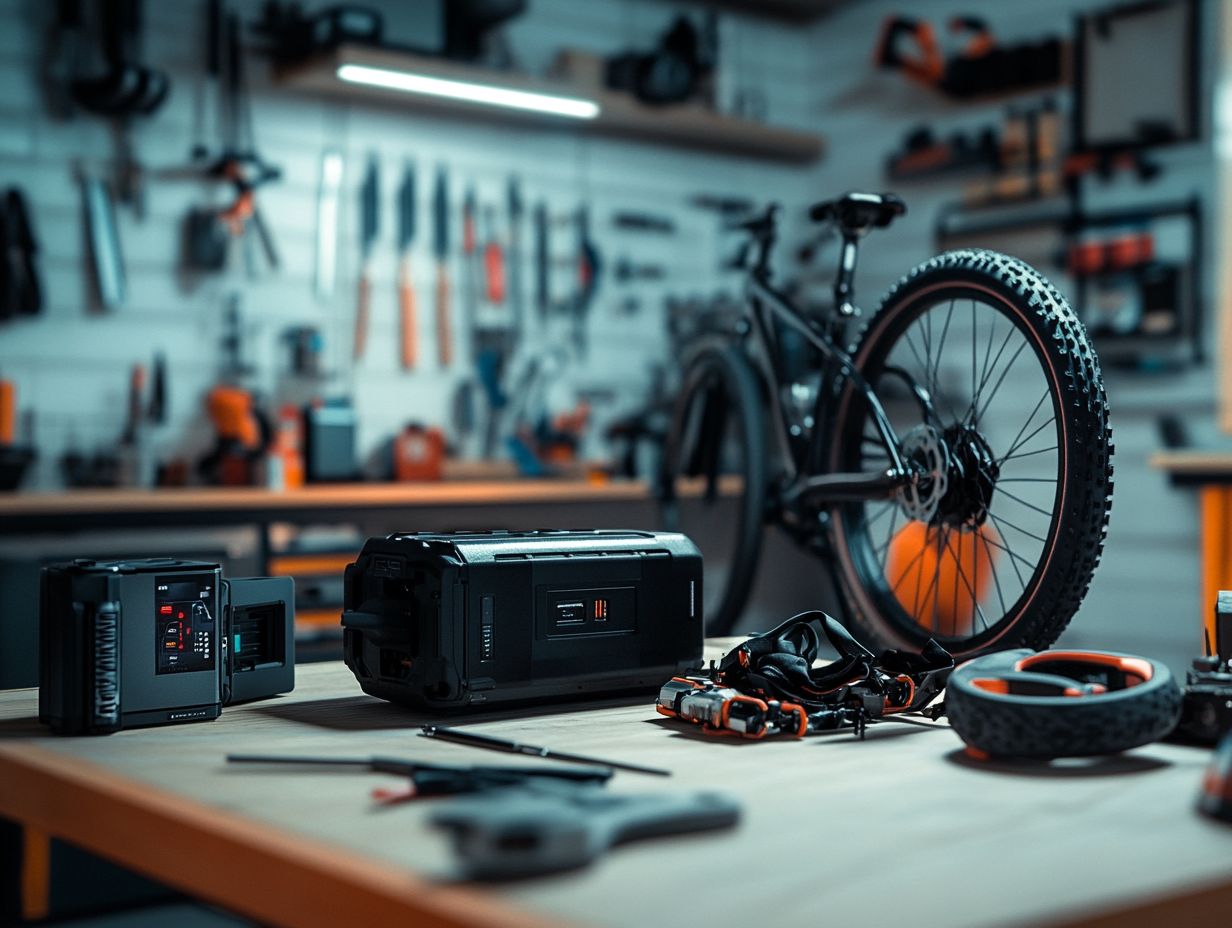
1. What are the main components of an electric bicycle?
The main components of an electric bicycle include the battery, motor, controller, display, and the parts that help the bike move. These components work together to provide power and control for the bike’s electric assist system.
2. How does the battery affect an electric bicycle’s performance?
The battery is crucial as it provides the power for the motor. The type and size of the battery can affect the bike’s range and overall performance. Choosing a high-quality battery is essential for optimal performance.
3. What is the difference between a hub motor and a mid-drive motor?
A hub motor is located in the center of the wheel and provides direct power to the wheel. In contrast, a mid-drive motor is located near the pedals and uses the bike’s gears to provide power. Mid-drive motors offer better weight distribution and more efficient use of the battery, while hub motors are simpler and easier to maintain.
4. Is it possible to upgrade electric bicycle components?
Yes, certain components of an electric bicycle, such as the battery or motor, can be upgraded. However, it is important to consult with a professional to ensure compatibility and safety.
5. How does the controller affect an electric bicycle’s performance?
The controller is responsible for regulating the power output of the motor. A high-quality controller can provide a smoother and more efficient ride, while a lower-quality controller may result in jerky or uneven power delivery.
6. What should I consider when choosing an electric bicycle based on its components?
When choosing an electric bicycle, consider the battery life and range, motor type and power, controller quality, and the overall weight and design of the bike. Testing the bike and consulting with a professional for personalized recommendations is also important.

